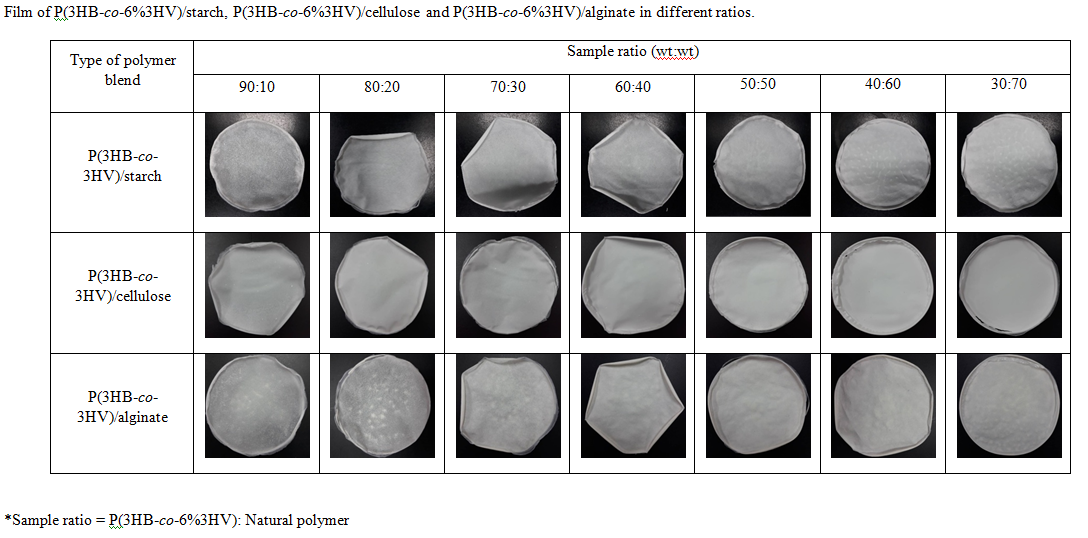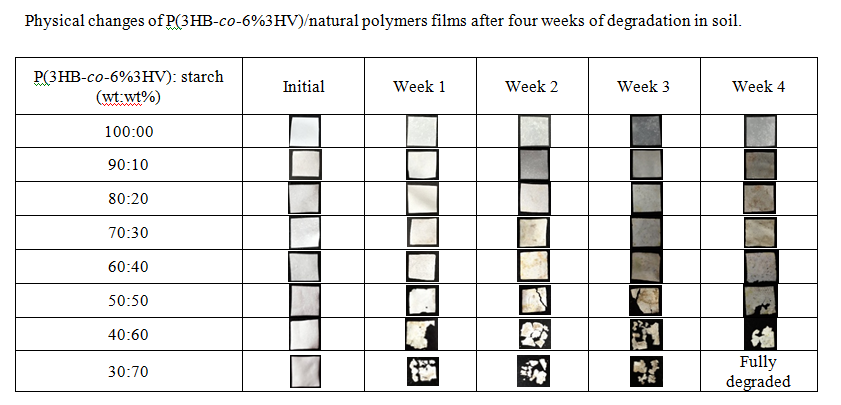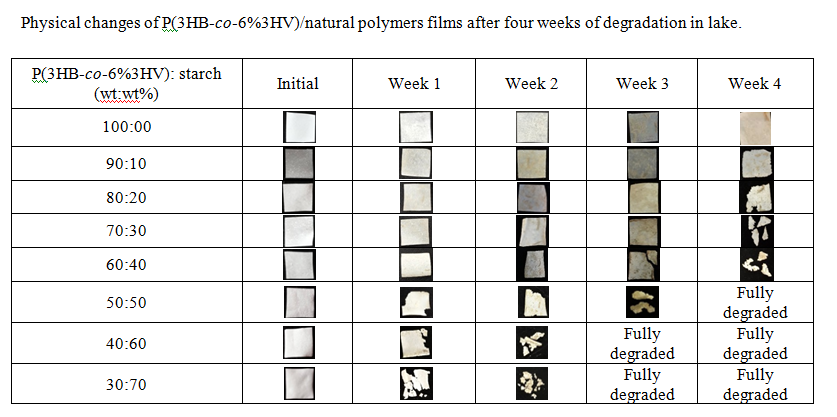Blend films of poly(3-hydroxybutyrate-co-3-hydroxyvalerate) with natural biopolymers
PHAs are fully biodegradable polymers which are synthesised naturally by microorganisms as storage energy under unfavourable conditions such as the presence of excess carbon sources or lack of other nutrients such as nitrogen and phosphorus. Among PHAs, poly(3-hydroxybutyrate-co-3-hydroxy valerate) is one of the commonly studied biodegradable material since they are more flexible, stronger and impact resistant. However, the P(3HB-co-3HV) copolymers are well known for having high production cost and narrow range of material properties, thus restricted its large commercial applications. Blending is one of the effective approaches to develop new polymeric materials with desired properties and suppressed the drawbacks of the pure polymers.
In this research, we report the blending of biodegradable poly(3-hydroxybutyrate-co-3-hydroxy valerate) or P(3HB-co-3HV) synthesised by a novel Cupriavidus malaysiensis USMAA2-4 with different ratios of natural polymers from starch, cellulose, and alginate. In addition, the mechanical properties characterization and degradation of the blend films under uncontrolled environment conditions were studied in detail. The novelty of this work comes from the P(3HB-co-3HV) copolymers modifications through the blending technique which led to the improvement of mechanical properties of the polymers. In addition, our finding also discovered that the natural polymers degraders contribute to the degradation of the blend films on the environment.


https://link.springer.com/article/10.1007/s00289-020-03286-1
- Hits: 855